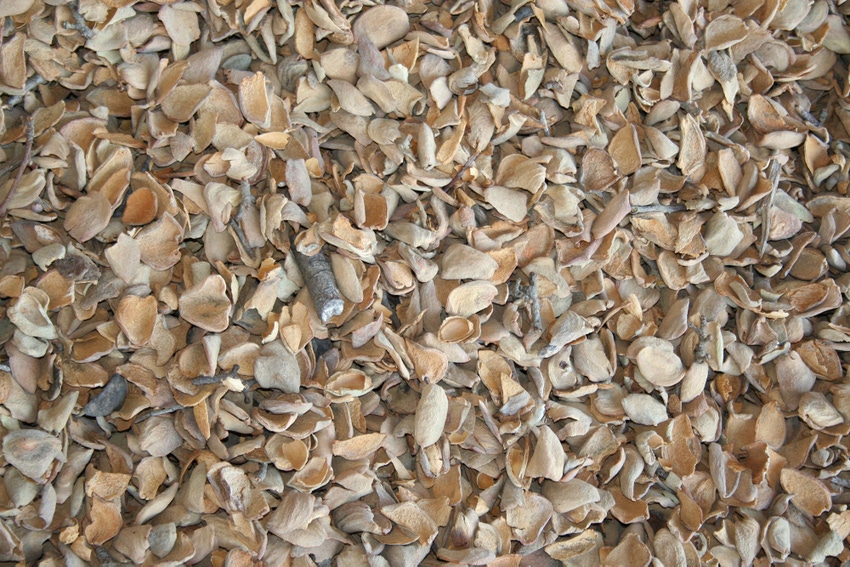
Stockpiles have long been a way of life for the almond industry, and proper management is critical to prevent aflatoxin contamination.
Nut contamination actually begins in the orchard as molds which produce aflatoxins are common in nature. Molds are found in the soil and in mummy nuts infested with the Navel orangeworm pest. Contamination levels beyond allowable levels can lead to nut rejection in the marketplace.
Research funded by the Almond Board of California suggests that certain conditions in stockpiled almonds can increase the risk of growth and spread of Aspergillus spp, the fungal molds that cause aflatoxins.
Mel Machado, grower relations manager at Blue Diamond, says high moisture levels in stockpiles are the primary cause of mold growth.
“You don’t want excess moisture. The hulls and kernel should be as dry as possible,” Machado said.
Mold is not the only potential problem in a stockpile. Concealed damage can occur when moisture and heat buildup in the pile, resulting in dark kernels and off flavors. This can reduce nut quality and in the end grower income.
The Almond Board is funding research to establish a threshold and develop management guidelines for specific allowable kernel moisture content and temperature in stockpiles.
Machado says if huller capacity is not sufficient to handle almonds when harvested the use of stockpiles is unavoidable. Growers and farm managers should understand how to prevent moisture build up and to properly build and maintain stockpiles until nuts can be hulled.
Stockpile sites should be raised or sloped to allow moisture to drain away. The stockpile’s shape can also help prevent mold growth. Stockpiles with flat tops can minimize the areas where condensation can build under the tarp.
Machado says it works best to build off the edge, and not move the elevator too far away to create an uneven surface. They should also be positioned to the north and south. Condensation and mold growth can be worse on the north end of the pile when the long side faces east to west. The absence of ants at the site is a plus, he notes.
Before sweeping the nuts in the orchard, taking good nut samples to determine moisture levels is a good first step to avoid mold growth in stockpiles. Take samples from the orchard sites with the worst drying conditions – for example, the north side of the canopy next to the tree trunk where moisture tends to be about 2 percent higher than other areas.
Modern hulling machinery can hull nuts at higher levels of moisture, Machado notes, which can lead to an earlier harvest.
Tarping stockpiles are common but can result in condensation. After fumigation, Machado says piles should be vented to allow moisture to escape.
White-on-black tarp is recommended for stockpiles as it minimizes temperature fluctuations tied to condensation. The one drawback – it’s difficult to see if condensation exists. Machado says many growers still use clear plastic tarps to cover piles and condensation can be easily seen. Clear tarps are best used on almonds well below the moisture threshold.
Controlling relative humidity in a stockpile is critical to almond quality. Tarps can be removed during the day to allow the moisture to escape and recover at night.
The Almond Board says relative humidity above 65 percent within the pile is the maximum for optimum storage conditions. Relative humidity of 59 percent with kernel and hull water content at 9.14 is borderline.
About the Author(s)
You May Also Like




